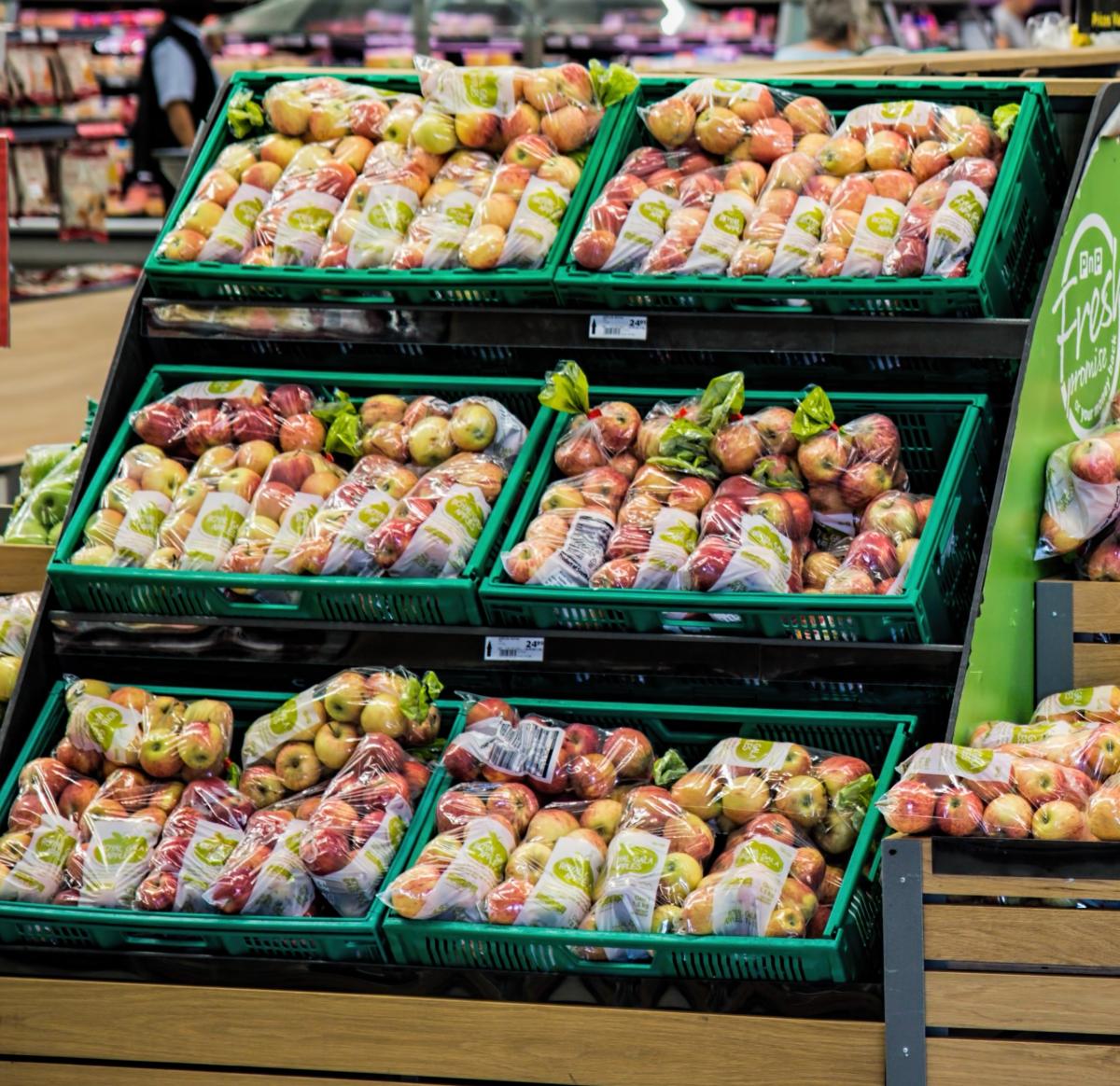THE ON-GOING trade war between the United States and China is beginning to make itself felt in supply chains across the Asia Pacific. Governments and businesses, the ASEAN, all expect it would come to this and are laying out plans, but how prepared can the region’s manufacturing industry be? In this interview, Graham Conlon, Global Vice President, Digital Supply Chain & Manufacturing, SAP, explains how organisations can benefit from having a streamlined supply chain as well as in adopting industry 4.0 technologies to help them “brave through” these times. He also explains how this is vital for the food and beverage manufacturing industry today.

Graham Conlon, Global Vice President, Digital Supply Chain & Manufacturing, SAP
How can a digital supply chain help organisations brave through this trade war period? Why will it be a source of competitive advantage?
One way to assess the ramifications of a drawn-out trade war is to regard it as a form of industry disruption. View through this lens, as trade becomes costlier, organisations will need to become nimbler in seizing opportunities and finding ways to reap cost efficiencies. The best way to achieve this is through digitalising the supply chain.
A digital supply chain relies on next-generation technologies such as IoT, Big Data and cloud-based computing to provide visibility into what is going on within the walls of the enterprise as well as suppliers and the market. Empowered with this transparency, organisations can interpret information and rapidly make decisions in response to data. As a result, there is a strong focus on production-on-demand, in any quantity with any variants and sequence, as businesses move resources only when necessary at any given time, in turn reducing overall cost. This translates into the ability to respond faster to customer requirements and market conditions such as sudden spikes in demand, which is a form of competitive advantage.
Fundamentally, SAP remains committed to open markets and fair international competition. In a time of economic uncertainty, businesses, especially small and medium-sized enterprises without large pools of resources, will need to invest in digital technology solutions to run fast, better and more intelligently to stay ahead of competition. 80% of our customers in China are SMBs, and they can take advantage of technology to maximise efficiencies of their supply chains and international markets to grow.
What will it take to create a connected, intelligent supply chain that cross borders in the region?
Once a digital representation of the end to end supply chain is established, the key to this lies in collaboration across borders, within and between industries, businesses and governments. Free trade agreements in the region such as the upcoming Regional Comprehensive Economic Partnership are expected to play a major role in easing the process of setting up cross-border supply chains at a lower cost.
To facilitate cross-border facilitation, SAP Ariba business network serves as a platform for more than 3 million companies worldwide to speak and collaborate. Nearly $1.9 trillion in business commerce runs through the SAP Ariba platform.
What is Asia’s role in leading the digital supply chain charge?
Asia has huge market growth potential and is well-placed to lead the global digital supply chain. In fact, according to Industry 4.0 Market Reports, Asia’s Industry 4.0 market is the world’s fastest growing at a CAGR of 23.7%. Having established itself as a manufacturing powerhouse, it is making concrete steps to further strengthen its manufacturing capabilities with over US$1 trillion in funding has been earmarked by Asian countries to boost their Industry 4.0 initiatives.
Driven by low labour costs and globalisation, China has established itself as a “global” factory and has set aside over US$807 billion of state-guided funds for its “Made in China” industries. By 2023, China will dominate 42% of the APAC Industry 4.0 market, according to Industry 4.0 Market Reports. In addition, India, the world’s fastest growing large economy, is also expected to ramp up its Industry 4.0 initiatives. Developed countries including Japan, Singapore and South Korea have already established themselves as leaders in advanced manufacturing. World Economic Forum’s Readiness for the Future of Production Report 2018 ranked Japan and South Korea as the top two nations in terms while Singapore was ranked 11th.
Our customers are increasingly recognising the value of cloud technologies and making the shift to cloud in order to seize the opportunities from Industry 4.0. SAP has the largest cloud footprint with more than 100 cloud solutions and 160 million subscribers globally, and we want to continue enabling our customers and partners to capitalise on cloud and emerging technologies to digitalise their supply chains and win in today’s digital economy.

Fresh produce spend half of its shelf-life in transit between supplier and retailer, says Mr Conlon.
Why should food manufacturers have an efficient supply chain? What’s the key to food manufacturers when building a supply chain?
Aside from cost savings, an efficient supply chain will play a large role in contributing to food sustainability. According to the UN’s Food and Agriculture Organisation, roughly one third of food produced for human consumption every year is either lost or wasted with fruits and vegetables having the highest wastage rates. By 2030, Asia’s population will expand by 578 million with China, Indonesia and India accounting for three quarters of these new urban dwellers, based on the Economist Intelligence Unit’s Fixing Asia’s Food Systems 2018 study. This means that the food supply chain of today needs to become a lot more efficient. Creating an efficient supply chain through the direct support of farmers and investments in infrastructure, transportation can help to reduce the amount of food loss and waste.
An efficient supply chain can also tackle health-related issues particularly with perishable food. Time and distance are enemies of freshness and fresh produce typically spend half of its shelf-life in transit between supplier and retailer. While most nations enforce strict health regulations, the selling of expired food is a common problem especially in developing Asian countries.
To lay the ground for an efficient supply chain, food manufacturers need to first establish a strong digital core that will enable them to cope with the immense of volume of data and turn these into actionable insights.
Our recent partnership with CrowdFarmX, a start-up farming cooperative on blockchain exemplifies this. CrowdFarmX aims to uplift farmers in Southeast Asia out of poverty, and deployed SAP S/4 HANA Public Cloud, an intelligent enterprise resource planning suite that serves as its digital core. The solution accelerates the onboarding of farmers onto the platform and allows them to gain a greater cut of profits because they are directly linked up with wholesalers and distributors. The end-to-end visibility of the supply chain increases food safety, ensuring that quality food such as pesticide-free produce gets onto tables.
Another way to do this is to deploy digital twins, which involves attaching IoT sensors to assets and equipment, giving organisations the ability to share data between themselves and supply chain partners. These insights will enable organisations to conduct continuous, real-time planning and consistently realign plans to satisfy customers.
This transparency also provides an end-to-end perspective on every aspect of the business, and real-time updates on how changes in manufacturing, equipment availability, quality, warehousing, transportation impacts the supply chain. For example, if there is a delay in transportation, this incident can be traced and tracked because all devices, vehicles and systems are integrated across a single platform which is connected to the system of records, and in-built with the system of intelligence. The business can then efficiently monitor the propagation of the incident’s impact across the enterprise, quantify and analyse the impact of the incident across the value chain including the impact on financial performance. Additionally, the accuracy of the response can be increased with machine learning.
Industry players should also embrace and incorporate new technologies into their supply chain. For example, the use of blockchain will assure a verifiable provenance of what is delivered by whom to whom, when and where within the supply chain. This is especially important in the transporting and handling of food where contamination is a constant risk. With blockchain, food safety is ensured because only authorised parties can access the products, and information cannot be altered once it has been entered.
Bodega














